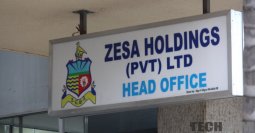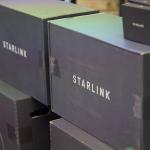The Zimbabwe Electrical Supply Authority (ZESA) Holdings is a state-owned company responsible for generating, transmitting, and distributing electricity in Zimbabwe. That’s not speculation on why they exist; they say that themselves.
ZESA doesn’t really face competition. While there are some Independent Power Producers (IPPs) in the country, they operate on a much smaller scale.
Additionally, many of them produce power only for their own consumption and do not contribute to the national grid. For example, Zimplats has its own power generation facilities.
So, it’s no surprise that ZESA is the largest power generator in the country. On the 27th of August, ZESA, through its subsidiary ZPC, generated a maximum of 1,361 MW of power. The IPPs don’t come close to that.
One of the biggest operational IPPs is Triangle Power Station, which has a capacity of 35 MW, but as you might have guessed, it produces power for its own consumption. Here are a few of the other major operational IPPs:
- Zimbabwe Zhongxin Electrical Energy Thermal Power Station – 50 MW – Coal-fired
- Hippo Valley Estate Power Station – 39 MW – Bagasse/Thermal
- Pungwe Mini Hydro (B) Power Station – 15.25 MW – Hydro
When it comes to transmission and distribution, ZESA has a monopoly.
ZESA as king
The only problem is that none of us would say ZESA has been doing a good job. It’s hard to argue that ZESA is excelling when there are rolling blackouts almost every day in many areas.
We understand that there are various reasons for the blackouts, but ZESA’s sole purpose is to generate, transmit, and distribute electricity. Generation is not meeting demand, and the transmission and distribution infrastructure is crumbling.
There is no world where that could be considered great. Yet we were treated to this:
ZESA is actually winning awards for its work. I’m sorry, but this is far from acknowledging that there may be some factors hindering ZESA’s effectiveness. This crosses the line into praising ZESA, and I think we crossed into the ridiculous with this one.
Does ZESA deserve the award?
Let’s explore what might have compelled ZAS to give this award to ZESA.
As we all know, shifting rain patterns up north have affected the water levels at Kariba. This was supposed to be our biggest power generation facility, but climate change has thrown a spanner in the works.
ZESA didn’t take climate change sitting down. With a little overpriced help from the Chinese, they invested in upgrades at Hwange. Was it the greenest solution? No, it was the exact opposite of green—Hwange is a coal-powered thermal station.
The upgrades didn’t earn any brownie points from climate activists, but they were crucial for the average Zimbabwean.
The country’s Energy minister said:
The installed capacity at Kariba is 1,050 megawatts and we are only able to produce 214 megawatts on average because of the water rationing, which has resulted out of low inflows in the lake.
The Zambians, with whom we share Kariba, have an installed capacity of 1,080 MW but are also not generating anything close to that. In fact, the Zambians plan to shut down their power station on the 14th of September due to a lack of water.
Both Zimbabwe and Zambia depend(ed) on hydroelectric power, so with the reduced generation at Kariba, it is no surprise that blackouts are the order of the day in both countries.
Hwange to the rescue
For Zimbabwe, though, if it weren’t for the Hwange upgrades, the situation would be untenable. Before the upgrades, Hwange was producing less than 100 MW, far below its then-installed capacity of 920 MW. For example, last year, Hwange produced 72 MW on the 1st of March.
The upgrades added 600 MW to the national grid, and on the 27th of August, Hwange produced a maximum of 1,099 MW. That’s quite the jump from 72 MW before the upgrades.
As a result, the disaster at Kariba has been somewhat mitigated.
This is probably why the Zimbabwe Agricultural Society decided to name ZESA the best overall winner in the Energy sector. That’s probably also why ZESA accepted the award, talking about their commitment to powering the nation’s growth.
I understand where they were coming from, but seeing ZESA accept an award for its work right when the country was facing 18-hour load-shedding felt like a joke.
It looked like someone hacked ZESA’s social media to announce that award. I thought some funny Zimbabweans were mocking ZESA, but alas, it was real.
Who are we kidding, the award wasn’t deserved
If I were ZESA, I would not have accepted the award. Yes, Hwange is a silver lining for the next few years, but we are in this whole mess because of ZESA’s lack of proactivity.
Kariba was upgraded in 2014, increasing capacity from 750 MW to 1,050 MW. That was good. However, it had last been upgraded back in the Rhodesian days in 1962. Kariba saw no upgrades for 52 years.
Moreover, we love to cite low water levels as the reason for Kariba’s struggles, but that’s not the full story. Unfortunately, climate change or El Niño-induced droughts can’t take all the blame. Mismanagement plays a role too.
You may recall that Kariba was shut down for a little while back in 2022 because of said low water levels. What we may not have known is that it was also due to misuse of baseload capacity.
Mismanaged water
The Western Power Company, a team of international professionals in Zambia working on an 180 MW project with the Zambian government, says:
- Total average inflow to the reservoir in recent years has been very nearly equal to the long-term average – 52km³ per year. There has been no observable impact on inflow due to climate change, climate variability or increased abstraction in recent years.
- The low reservoir level reached at the end of 2022 was not due to a reduction in flows into the reservoir. Rather, this was because the additional peaking capacity installed since 2009 being used as baseload capacity particularly in the period March 2021 to November 2022.
This simply means that the low reservoir level at Kariba Dam was not caused by a decrease in the amount of water flowing into the reservoir.
Rather, it was the result of using the additional power generation capacity (installed after 2009) more intensively, particularly as a primary power source from March 2021 to November 2022.
The so-called peaking capacity installed after 2009 was designed to be used for short periods of time, but it has been used as baseload capacity, meaning it has been generating electricity at a constant rate. This has resulted in more water being released from the reservoir than is flowing in.
To bring it all around, Zimbabwe had no alternatives to Kariba for a long time, so we ended up draining the reservoir to meet our short-term needs. This worsened the problem over time when we found ourselves having to cut generation off completely.
Today, we are generating a mere 214 MW because we abused Kariba. So, yeah, ZESA should not be accepting any awards.
Some hope for your weary soul
We can’t end on ZESA’s shortcomings. Here are a few power projects to look out for in the future. I know, some of these projects are wishful thinking, and some won’t see the light of day. However, it’s still good for the soul to ponder these:
- Lusulu Power Plant by the PER Group is a coal-powered 2,000 MW plant. It was licensed in 2010 and will be located in Binga. It will provide power to the national grid. Stage of Development: Project Preparation.
- Prestige Massive Thermal Power Plant- Phase 2 by Prestige Massive (Private) Limited is a 1,200 MW coal-fired thermal plant. It was licensed in 2023 and will be located in Beitbridge. It will be for own consumption. Stage of Development: Project Preparation.
- Shilands Power Plant by Shilands Enterprises is a gas-fired 345 MW plant. It was licensed in 2016 and will be located in Mutare. It will provide power to the national grid. Stage of Development: Project Preparation.
Okay, project preparation is about as pie-in-the-sky as it sounds. Here are a few that are under construction:
- Manhize Resources Thermal Power Plant by Manhize Resources (Private) Limited is a 100 MW coal-fired thermal plant. It was licensed in 2023 and is located in Mvuma. It is for own consumption.
- Chidobe-Mizpah Solar Photovoltaic Facility by Power Ventures (Private) Limited is a 25 MW solar plant. It was licensed in 2020 and is located in Hwange. It will contribute to the national grid.
- Centragrid Power Station by Centragrid Private Limited is a 23 MW solar plant. It was licensed in 2016 and is located in Nyabira. It will contribute to the national grid.
There are many other projects at different stages of development. Will we see all of them come to fruition? No, but however many we get, we need.
If Lusulu, the 2,000 MW plant in Binga, sees the light of day, we would be a net exporter overnight. One can only hope.




In Honde Valley magesti haaende only kana paita a faulty and it doesnt take a maximum of 2 hours to be fixed. All thnx to the white owned Pungwe Hydro.
At least there is a beckoning white light at the end of the tunnel. It’s only a matter of time let them try to expedite the said preparations while we keep our fingers scissors crossed.
for the third world they are pretty good
What award did ZAS give Zesa? Kkkk. This should have been for the Best Stand at the show in the energy category. Not necessarily a corporate performance based award. Instinctively the Zesa spin doctors turned it into a corporate performance award kkk.
Unfortunately you took their bluff hook, line and sinker. But the result was a very well researched and we’ll presented article. Thanks a lot for the useful insights.
Net metering could help dai vaibhadhara cash instead of ZESA credits. Vanhu vaitotenga masolar knowing that in the long run anozvitenga thereby increasing power supply to the national grid